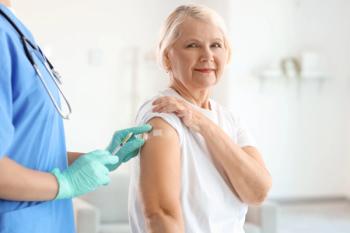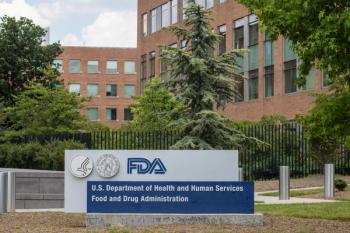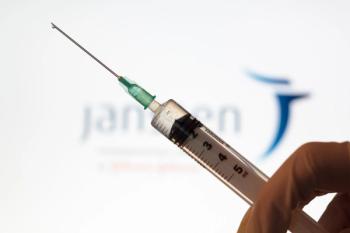
Pharmacy Practice in Focus: Oncology
- October 2023
- Volume 5
- Issue 6
Likelihood of Depression Is High in Patients With Cancer Who Experience Serious Adverse Events
Mental health treatment may be necessary when SAEs occur.
In patients with cancer, serious adverse events (SAEs) are an important method of measuring drug safety that can lead to discontinuation of treatment, hospitalization, or death. Not only are these SAEs physically painful, but they can also result in anxiety or depression. A recent multicenter, cross-sectional survey of 112 patients with cancer who experienced SAEs while enrolled in clinical trials was conducted in hospitals affiliated with the University of Science and Technology of China from December 2021 to November 2022. The study evaluated the prevalence of anxiety and depression among the participants, and it was published in Cancer Medicine.
Patients included in the survey were aged 18 years or older, with exclusion criteria based on whether the patient currently had depression and anxiety or had a history of depression and anxiety, neurological problems, and cognitive impairment of any etiology. Among the 112 patients enrolled in the study, 56 were men (50%) and 56 were women (50%). The most common types of cancer present were lung cancer (n = 23; 20.5%), breast cancer (n = 25; 22.3%), liver cancer (n = 19; 17.0%), and gastric cancer (n = 18; 16.1%). The remaining patients (n = 27; 24.1%) had esophageal cancer, cervical cancer, ovarian cancer, prostate cancer, and hematologic cancer.
Depression and anxiety were measured using Patient Health Questionnaire-9 (PHQ-9) and General Anxiety Disorder-7 (GAD-7) scores, respectively. The PHQ-9 measures the symptoms of depression, with scores from 9 different items adding up to a total score between 0 and 27 (no depression to mild, 1-7; moderate, 8-14; moderate to severe, 15-19; severe, 20-27). On the other hand, the GAD-7 is a 7-item measure of anxiety symptoms that adds up to a score between 0 and 21 (no anxiety to mild, 0-9; moderate, 10-14; moderate to severe, 15-21). Depending on the severity of the patient’s anxiety and depression, they were divided into 1 of 2 groups: the none to mild group and the moderate to severe group.
The results showed that the patients enrolled in oncology trials who experienced SAEs had presented with moderate to severe anxiety (13.4%) and depression (38.4%). Patients with cancer who experienced SAEs had a much higher risk of depression than those in prior trials (15%-29%). The study findings suggest that anxiety and depression are likely to coexist in patients who have experienced SAEs, noticeably in those with anxiety.
No depression to mild depression was present in 69 patients (61.6%; median PHQ-9 score, 2; range, 0-4), whereas moderate to severe depression was present in the remaining 43 patients (38.4%; median PHQ-9 score, 10; range, 8-14). Further, the median pain score in the moderate to severe group was higher than the none to mild group (50 patients [72.5%]; P = .020), and the median pain score of the moderate to severe depression group (median, 3; range, 2-3) was higher than the overall score of the none to mild depression group (median, 2; range, 1-2; P < .001). The median Impact of Events Scale (IES) score was noticeably higher in the moderate to severe group (median score, 33.0; range, 22.0-48.0) than in the none to mild group (median score, 22.0; range, 5.5-30.0; P < .001), whereas the mean Fatigue Symptom Inventory (FSI) score was significantly lower in the none to mild group (mean score, 14; range, 7-21) than in the moderate to severe group (mean score, 34; range, 26-47; P < .001). Of the patients who had moderate to severe depression, 14 (32.6%) had also reported experiencing moderate to severe anxiety.
Further, a total of 97 patients (86.6%; median GAD-7 score, 2; range, 0-6.5) had no anxiety to mild anxiety and 15 (13.4%; median GAD-7 score, 14; range, 11-14) had moderate to severe anxiety. Further, patients in the moderate to severe anxiety group had a higher median pain score (3; range, 2-4; median IES score, 48; range, 39-60), and FSI score (47; range, 34-53) than those in the no anxiety to mild anxiety group (median pain score, 2; range, 0-2; median IES score, 22; range, 12-31; and FSI score, 18; range, 9.5-28.0). Among the patients in the moderate to severe anxiety group, 14 (93.3%) had also reported experiencing moderate to severe depression.
Notably, the study authors found that patients with cancer experiencing SAEs who did not receive frequent medical attention had demonstrated much higher levels of depression compared with those who received medical attention more often (odds ratio [OR], 28.792; 95% CI, 1.610-514.991; P = .022). Additionally, lower cognitive function (OR, 0.907; 95% CI, 0.824-0.998; P = .046) and lower global quality of life (OR, 0.945; 95% CI, 0.898-0.995; P = .031) were associated with depression, and pain (OR, 31.515; 95% CI, 1.055-941.124; P = .046), low emotional function (OR, 0.725; 95% CI, 0.540-0.973; P = .032), low global quality of life (OR, 0.893; 95% CI, 0.812-0.983; P = .020), and high IES scores (OR, 1.258; 95% CI, 1.042-1.519; P = .029) were associated with anxiety.
More than half of patients with hematological cancer and gastric cancer had moderate to severe depression, and the frequency of depression in patients with lung cancer was more prominent than in prior research. Additionally, patients with gastric cancer and cervical cancer had high rates of anxiety. Unlike prior research, patients with gastric cancer were more likely to have moderate to severe anxiety (17.7% vs 22.2%, respectively).
Limitations to the study include its cross-sectional nature, which could hinder the ability to draw a causal relationship between SAEs and anxiety and depression. Additionally, there was no followup on tracked changes in anxiety and depression among patients following their inclusion in clinical trials, as well as the small sample size of the study.
Notably, the likelihood of depression in patients with cancer who experienced SAEs was greater than the likelihood of anxiety, according to the study authors. These results indicate a need to evaluate anxiety and depression in patients with cancer who are experiencing SAEs, as well as a need to consider providing mental health treatment for patients with cancer with SAEs during oncology clinical trials.
Reference
Peng Z, Wang C, Sun Y, et al. Depression and anxiety in cancer patient enrolled in clinical trials with serious adverse events. Cancer Med. 2023;10.1002/cam4.6556. doi:10.1002/cam4.6556
Articles in this issue
Newsletter
Stay informed on drug updates, treatment guidelines, and pharmacy practice trends—subscribe to Pharmacy Times for weekly clinical insights.














































































































































































































